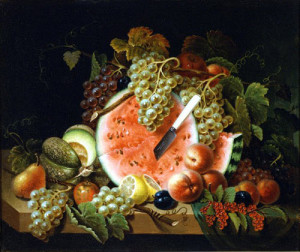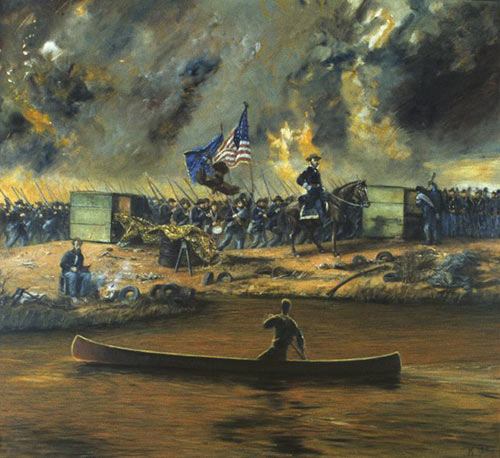The Jewish High Holy Days are here. Rosh Hashanah, celebrated on September 5 this year, means “Head of the Year.” It commemorates the Jewish New Year, and is the first of the High Holy Days, otherwise known as the “days of Awe.” Rosh Hashanah begins each year on the first day of Tishrei, which is the first month of the Jewish Calendar, and is believed to be the anniversary of the creation of Adam and Eve. The significance of the day is that it leads to Yom Kippur, which is described as the “Day of Judgment” and the “Day of Remembrance.” Some descriptions depict God as sitting on a throne, while books containing the deeds of all humanity are opened for review. Reflection, Repentance, Reconciliation, and Responsibility are the themes of the “Ten Days of Awe” between Rosh Hashanah and Yom Kippur. As a museum docent, I am often struck by how images I encounter in the galleries remind me of the symbols and practices that surround these important Jewish Holidays.


During the ten days between Rosh Hashanah and Yom Kippur, there is the opportunity to repent for any misdeeds committed during the past year, to be charitable, and to offer prayer, in order to be sealed in the “Book of Life” for the following year. Apology between fellow humans can be offered by admitting to hurtful deeds and asking the individual for forgiveness. The painting The Sisters by Edmund Tarbell looks to me like the two women have something difficult to discuss with each other. It reminds me of talking with a family member, friend, or colleague to ask for reconciliation so that each person no longer feels hurt.
I often experience mixed feelings at Rosh Hashanah, just like at the secular New Year, of both festivity and serious reflection about the past year. I recall an amusing painting in the Gibbes of George Cooke’s work, Robert and Elizabeth Gilchrist, shows an important law book being marked in by one of the children. I can almost picture God deciding who will be sealed in his book of life for the following year!

In addition to self-reflection, Rosh Hashanah is also a time for families to get together. Two paintings at the Gibbes come to mind for warm family gatherings: Larry Francis Levy’s Project New Day and Lewis Towson Voight’s work depicting three Toomer children. When families get together there is inevitably a festive meal, and the paintings: Still Life with Watermelon by Thomas Wrightman, and Still Life with Duck and Snipe by Charles Fraser, depict the makings of bountiful feasts.


In contrast to the delicious meals consumed during Rosh Hashanah, traditionally followers observe Yom Kippur with an approximately 25 hour fast and intensive prayer, often spending a large part of the day in synagogue services to demonstrate atonement and repentance. Yom Kippur is the final Day of Judgment, when the “Book” is closed for another year. It is also known as the Day of Atonement, and is the holiest day of the year for the Jewish people. The word, “Yom” means “Day” in Hebrew, and “Kippur” comes from a root meaning “to atone.” The goal of Yom Kippur is to have public and private confessions of guilt, and to amend one’s behavior for the following year and seek forgiveness.
One of the main symbols of Yom Kippur is the shofar, a musical instrument made from a ram’s horn. It is blown in long, short, and staccato blasts that follow a set sequence. Traditionally it is blown each morning the entire previous month to awaken the listeners from their “slumbers” and alert them to the coming judgment. Instruments are used in many instances as a call to attention, such as a drum in a parade or a bugle signaling dawn or dusk. Manning Williams’ painting, Sherman Marches South illustrates the use of sound alerting and rallying the troops.

Although the works I mention were not created specifically to represent the themes and tenants of the Jewish High Holidays, I can observe my own references in the subjects, moods, and actions that are depicted. The opportunity to incorporate one’s own experiences in the interpretation and appreciation of a work of art is something that I appreciate about my interactions with the public in my role as a docent at the Gibbes. L’Shana Tova!
—Mindelle K. Seltzer, Gibbes Museum Docent and guest blogger
Published September 12, 2013

